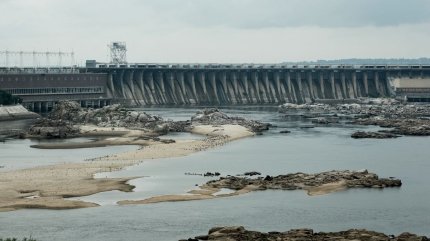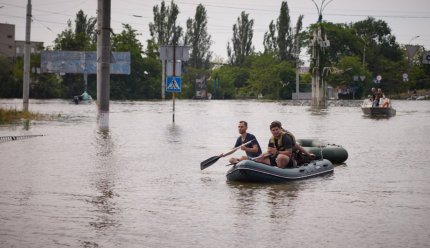The Russian occupiers destroyed the Kakhovka HPP on June 6, 2023. It became the biggest environmental crime in mankind's history.
Points of attention
- The undermining of the Kakhovka HPP became the most significant environmental crime, causing a large-scale ecological disaster in the region.
- Among the consequences of detonating hydroelectric power plants are flooding territories, loss of human lives and serious environmental problems.
- The restoration of the Kakhovka Dam is already planned and will involve design and construction work after the territories are deoccupied.
- Environmentalists emphasise restoring the station to preserve natural resources and stabilise the region's ecosystem.
- According to the research, the ecological condition of the reservoirs improved after the disaster, which is a positive signal for the future restoration of the hydroelectric power plant.
How Russia blew up the Kakhovka Dam
The destruction of the Kakhovka Dam on June 6, 2023, became one of the biggest man-made disasters in Europe.
The journalists identified the Russian army soldiers and their commanders who controlled the Kakhovka hydroelectric power station on the night of its detonation. These soldiers were, in particular, members of the Cossack" 205th separate motorised rifle brigade of the Russian Land Forces.
During the first week after the accident, according to satellite data, polluted river waters reached the Danube River and covered over 7.3 thousand square kilometers of the northwestern shelf of the Black Sea.

The detonation led to the flooding of territories in the Mykolaiv and Kherson regions, in particular, in the occupied territories.
According to the Ministry of Internal Affairs, 31 people died as a result of the destruction of the Kakhovka Dan. The occupiers claimed 55 dead on the captured lands of the Kherson region but did not allow international humanitarian organisations there.


